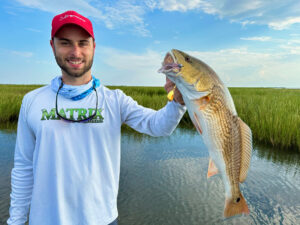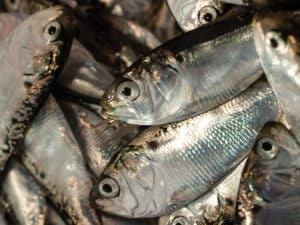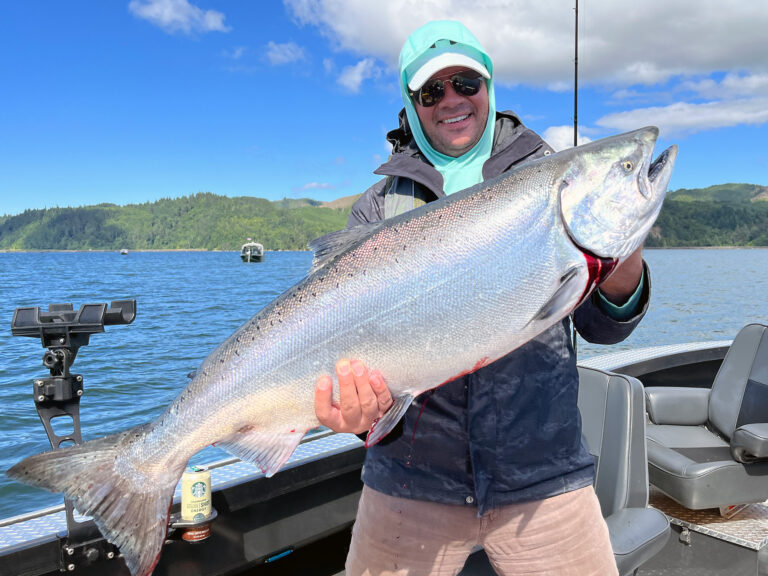Give ‘Em Plenty of Lip
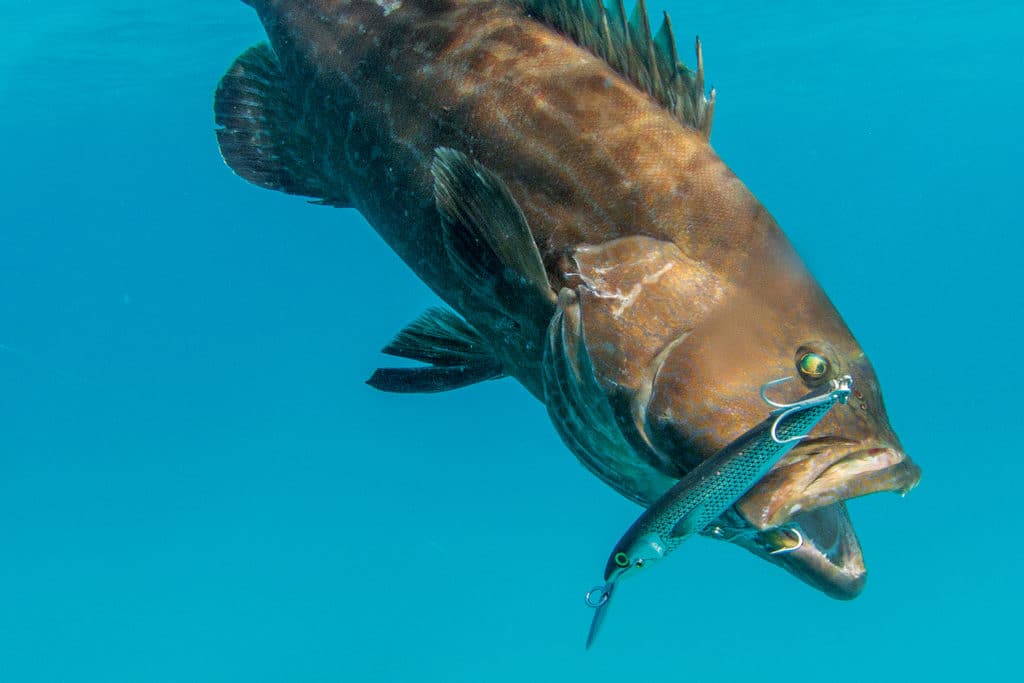
Extensive prep time for a successful day of trolling offshore involves breaking ballyhoo backs and clearing ballyhoo poop chutes; skirted lures, crimps and haywire twists; and other technical rigging that can take hours. There’s no better tactic to target marlin or sailfish, or even wahoo or tuna, than using traditional big-game trolling lures and rigs. But for species closer to shore and in bays and rivers, such as king mackerel, striped bass, grouper and speckled trout, trolling lipped plugs is a dynamite option. Check out what these experts had to say about trolling lipped plugs in different fishy scenarios.
Snacks for Macks
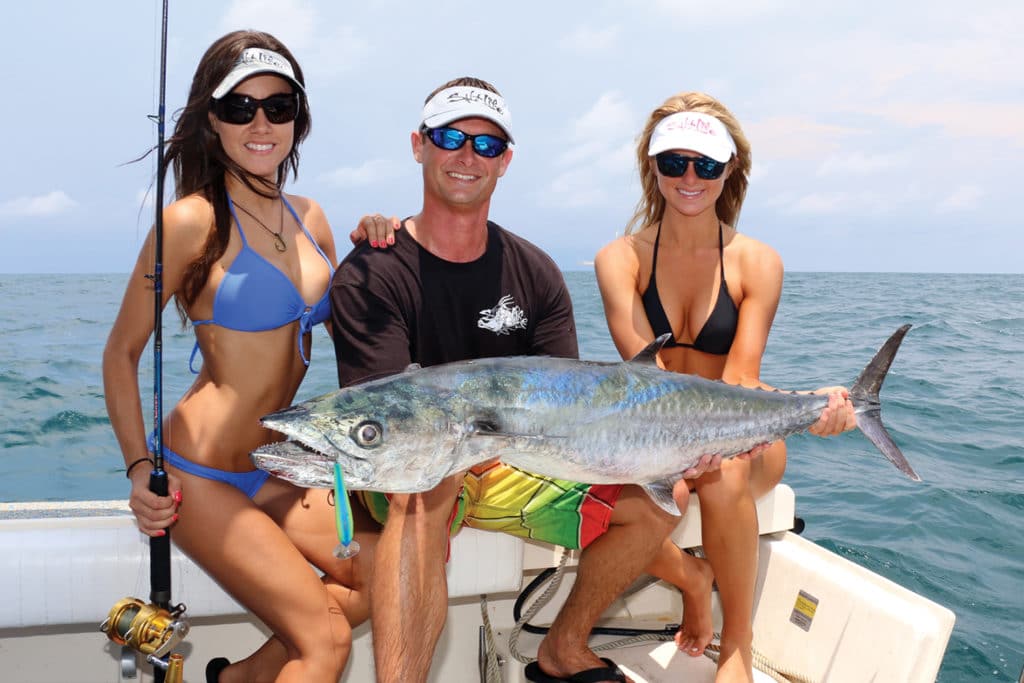
Catching kingfish with live baits, Drone spoons, stinger rigs or even metal jigs works well in different scenarios, but Capt. Jimmy Nelson of Crystal River, Florida, prefers deep-diving Yo-Zuri lipped plugs as his go-to method in the Gulf of Mexico. Nelson is sponsored by Yo-Zuri, but other lure companies produce comparable popular plugs, including Mann’s Stretch series, Rapala’s Magnum series and Williamson’s Speed Pro Deep.
“Trolling for kingfish with a lure can be more effective than live-baiting because you cover so much more water,” he says. “Also, I have fewer hooks pulled and skin-hooked fish compared to traditional stinger rigs.”
When sport fish attack a trolled plug and find the trebles, the landing rate seems to skyrocket, even when targeting speedy, toothy critters like king mackerel. Just keep tension on that first blistering run! Nelson prefers to troll the Yo-Zuri Crystal 3D Minnow Deep Divers and Hydro Magnums. Because those specific lures run 12 to 25 feet deep, his optimal boat speed is about 4 to 5 knots to make sure his plugs run true.
“Depending on the speed of the boat and how much line I have out, I’m generally trolling in 30 to 130 feet when targeting kingfish, but my favorite depth is 40 to 60 feet,” he says. “The best bottom structure to troll includes wrecks, ledges, or high-relief reefs and rocks, plus anywhere that’s holding lots of bait.”
Nelson switches between trolling with medium-heavy spin and conventional gear, though rods must have a fairly soft tip. “I like to troll with a medium-heavy 6500- to 7500-class spinning reel spooled with 65-pound Mustad (one of Nelson’s sponsors) braid,” he says. “From the main line, I tie on 50-pound leader, then 6 inches of wire, and lastly the lure.”
Digging Deep
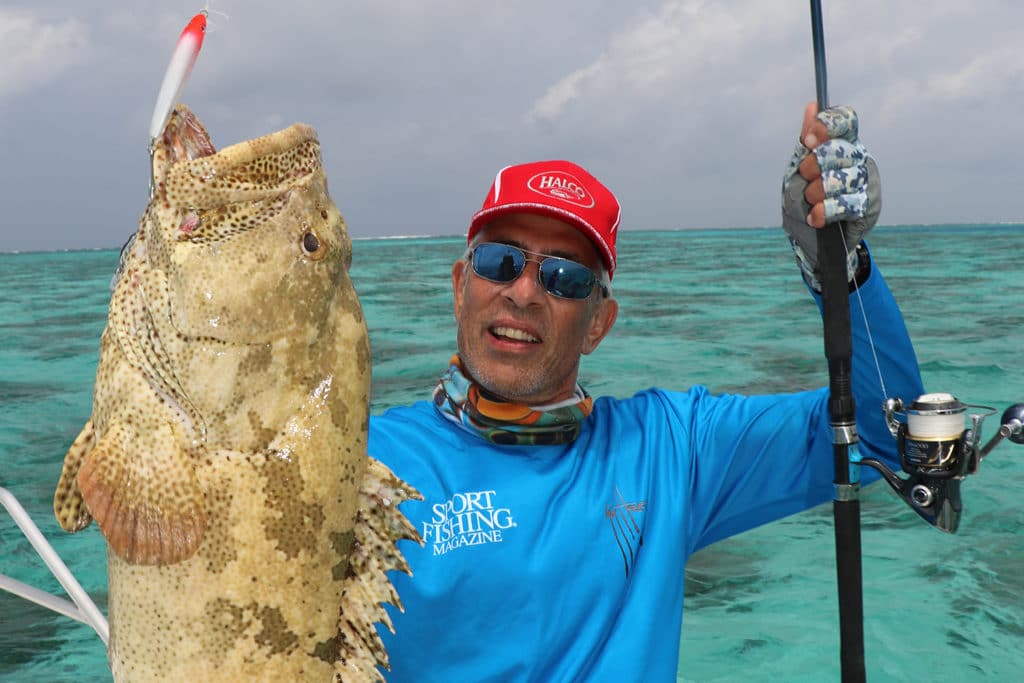
Using mostly the same lures as Nelson, Capt. Charlie Ellis of Miami, Florida, targets grouper in earnest with lipped divers near local reefs in 25 to 40 feet of water. He prefers to troll in the fall, but also when the season opens in May (2016 Atlantic state waters).
“When I hook a fish, I always keep my boat in gear to drag the grouper out and then start reeling,” says Ellis. “If you [stop] the boat immediately, they’ll head straight back down to the bottom.”
Ellis uses baits like Mann’s Stretch 20s and Rapala Magnums that swim 20 to 25 feet deep when trolled at 5 to 7 knots. “Fish the sandy edges near reefs and rocks, but don’t troll directly over the structure,” he says. “You’ll quickly lose those plugs, which can be expensive. I want my plugs to bump against the sandy bottom, not drag.”
South Florida’s top grouper-trolling target is the gag, with reds and blacks caught less commonly. Reds tend to be less aggressive and blacks not as numerous, Ellis says. He uses conventional reels like Shimano’s TLD II or Torium with enough drag to pull fish off the bottom, coupled with a boat rod that handles 20- to 50-pound braid.
“Braided line is a must when trolling lipped lures,” he says. “The line cuts through the water, there’s little stretch, and it allows the best presentation of the lures. I’ll let out 20 to 25 yards of braid when trolling, depending on the lure.”
Besides grouper, Ellis takes cobia and king mackerel incidentally, especially in deeper sections along reefs.
“Trolling covers more territory than drifting or bottom fishing a single spot,” says Ellis. “You’re quickly able to work different structure and depths, and if you get bit, it’s easy to circle back and cover the same productive areas.”
Trolling With Pedal Power
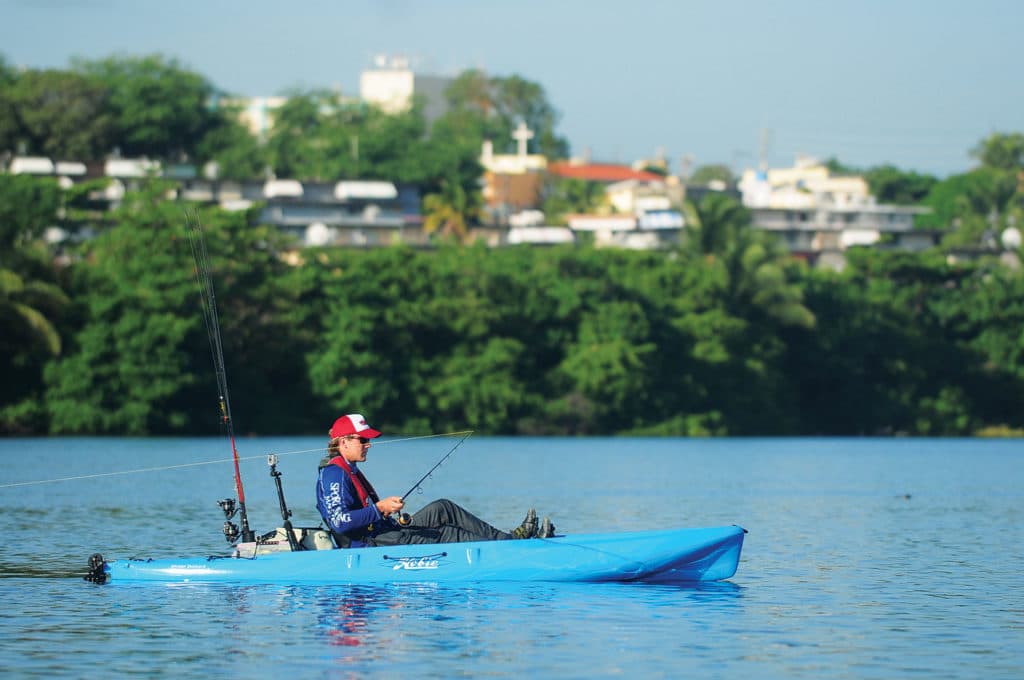
I always have a lure in the water, especially if I’m paddling my kayak from spot to spot. And with the popularity of pedal-driven and even electric-powered kayaks, many anglers have their hands free to fish while traveling. I’ve caught snook, seatrout, redfish, largemouth bass, kingfish, tarpon, bonito (little tunny) and other species trolling shallow-running plugs over flats, along mangrove-lined river bends, and paralleling the beach in 15‑plus feet of water.
Two necessary pieces of hardware are a pair of aftermarket rod holders from a company like Scotty, Railblaza, RAM or YakAttack. Mount the holders for trolling in the front, port and starboard, for quick access when a fish hits. To be safe, I attach a rod leash to each rod I use for trolling, as I’ve watched friends lose their setups to fish after vicious strikes.
The target species determines which tackle to use, though I’ve had equal success with both spinning and conventional equipment. Usually I’ll troll two rods, both tips aimed away from the paddle craft, like antennae on a giant ant.
I prefer lipped crankbaits inshore, such as the Sebile Action First Bull Crank, which dive shallow on the move but float to the surface when stopped. There are many times I’ll stop pedaling while kayaking, and at those times floating baits help prevent my lure from getting hung up. In deeper bays or along beachfronts, I’ll troll short-lipped stickbaits with longer profiles, such as Rapala X-Raps.
When a fish hits, don’t immediately go for the rod with the hooked fish. Instead, keep pedaling and quickly reel in the other line. The purpose of this tactic is twofold: Keeping the kayak moving sets the hook and keeps tension on the line, in my experience, and it allows you to clear your other baits. If paddling with a traditional sit-on-top kayak that requires arm power, I’ll troll just a single rod to prevent potential tangles. Some kayakers troll with a single rod even in pedal kayaks so they can set the hook themselves instead of relying on the kayak’s propulsion. A strike happens in a matter of seconds, so prepare for the bite and know what actions you need to take. No matter the species, trolling lipped baits is an effective tactic.



